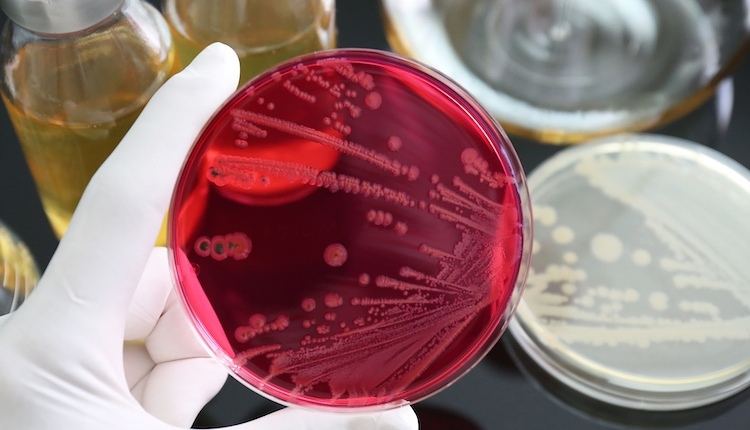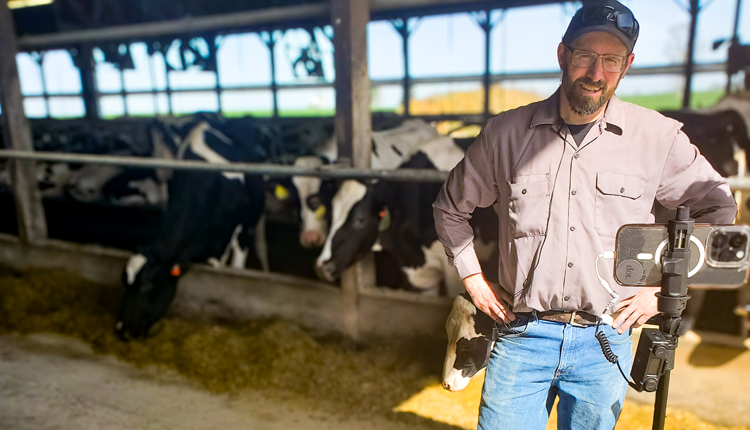Each winter, 24 of the nation's dairy herds provide a detailed look at a particular sector of their dairy operation for our Round Table series. In our most recent issue (February 10, 2015), four herds, from Washington, New Mexico, Wisconsin and Iowa, shared their strategies for obtaining the next pound of milk. While the majority of the printed responses focused on the dairies' feeding strategies, they also shared information on reproduction and their milk quality efforts.

Below, these four high-producing herds share a bit more:
How does the dairy's reproductive program play into production?
Appel Farms (Washington): We are at 170 DIM (days in milk). We do herd health weekly so we can closely monitor cows that are not bred. Our veterinarian uses ultrasound which helps our reproductive program immensely. We have pedometers on all of our cows and can monitor their activity; we have had much success with activity monitoring.
All of our Jerseys are bred with sexed semen the first few services, and we have been really pleased with our pregnancy rate.
El Dorado Dairy (New Mexico): Current DIM is 189. We were down to 165 when we were raising our own heifers. We sold the heifer program about a year ago so that we could buy partners out of the dairy operation, so we aren't replacing quite as many cows as we were when we had the heifers. We use a presynch/ovsynch program and are 100 percent A.I. bred. We had been using sexed semen on the virgin heifers. We'll do the same again to help build our heifer numbers once we are done with the transaction of buying our partners out.
Van De Walle Farms (Wisconsin): The current herd DIM is approximately 175, with a conception rate of 40 percent and 21-day pregnancy risk of 23 percent. Since we do not use BST, getting cows bred back on a timely basis is important for keeping the herd fresh and reducing the days spent in late lactation. Cows are pre-synched with all cows having first A.I. service between 65 and 75 DIM. Visual heat detection is used before the first ultrasound at 39 days for re-synch. Cows open more than 200 DIM are tail-chalked and detected by Genex.
VanEss Dairy (Iowa): We are currently at 173 DIM. We are constantly working on improving repro. We walk and chalk and breed our own cows every day. We ovsynch all open cows at preg check and also do the 14-11 presynch/ovsynch on all first services.
What steps do you take to produce high-quality milk?
Appel Farms: First of all, we really try to do our best in being consistent. We bed all cows with sand. The stalls are leveled, and sand is added once a week. We treat mastitis cows quickly. We record all treatments, and cows that have repeated treatments are culled from the herd. We feel that by doing these we keep our numbers low. We also have our inflations changed and have our machines tested regularly to ensure they're working properly.
El Dorado Dairy: Corral maintenance and keeping the pens aerated are very important even though it's pretty dry in our area. The milkers wear gloves, we singe udders, and we predip, wipe, hang machines and then postdip. We only prime cows four times per week unless we've had a rain, then we prime every day.
We culture all the high somatic cows (greater than 500,000), cull any Staph. aureus cows, then treat the other high somatic cows, even the subclinical cases. We rarely run above 150,000 SCC and usually average 120,000 to 130,000 for the month. Monthly counts below 100,000 aren't uncommon.
Van De Walle Farms: Clinical mastitis cases are treated, and milk is withheld from the bulk tank. Repeat mastitis cows are critically evaluated and are likely candidates for culling, particularly with high beef prices. Since we do not use DHI testing, we do not have individual cow somatic cell counts.
We are currently undergoing a parlor renovation for easier entry and release of the cows, which should help with cow comfort in the parlor and allow for more efficient, smoother and quieter milking.
Cows are treated at dry-off with Tomorrow, and a barrier teat dip is used. Out in the barn, we emphasize keeping the cows clean and dry, with ample dry bedding and very clean stalls.
VanEss Dairy: To produce high-quality milk it all comes back to our employees. We owe so much of our success to our employees. They are the ones producing our high-quality milk. We pull any cows with any sign of mastitis into our hospital pen where we on-farm culture and treat them accordingly.
We try to pay attention to all the small things that add up to make a difference with milk quality and overall profitability. We believe it requires a team mentality with everyone working toward the same goals to make it happen.

The author , Amanda Smith, was an associate editor and is an animal science graduate of Cornell University. Smith covers feeding, milk quality and heads up the World Dairy Expo Supplement. She grew up on a Medina, N.Y., dairy, and interned at a 1,700-cow western New York dairy, a large New York calf and heifer farm, and studied in New Zealand for one semester.

Below, these four high-producing herds share a bit more:
How does the dairy's reproductive program play into production?
Appel Farms (Washington): We are at 170 DIM (days in milk). We do herd health weekly so we can closely monitor cows that are not bred. Our veterinarian uses ultrasound which helps our reproductive program immensely. We have pedometers on all of our cows and can monitor their activity; we have had much success with activity monitoring.
All of our Jerseys are bred with sexed semen the first few services, and we have been really pleased with our pregnancy rate.
El Dorado Dairy (New Mexico): Current DIM is 189. We were down to 165 when we were raising our own heifers. We sold the heifer program about a year ago so that we could buy partners out of the dairy operation, so we aren't replacing quite as many cows as we were when we had the heifers. We use a presynch/ovsynch program and are 100 percent A.I. bred. We had been using sexed semen on the virgin heifers. We'll do the same again to help build our heifer numbers once we are done with the transaction of buying our partners out.
Van De Walle Farms (Wisconsin): The current herd DIM is approximately 175, with a conception rate of 40 percent and 21-day pregnancy risk of 23 percent. Since we do not use BST, getting cows bred back on a timely basis is important for keeping the herd fresh and reducing the days spent in late lactation. Cows are pre-synched with all cows having first A.I. service between 65 and 75 DIM. Visual heat detection is used before the first ultrasound at 39 days for re-synch. Cows open more than 200 DIM are tail-chalked and detected by Genex.
VanEss Dairy (Iowa): We are currently at 173 DIM. We are constantly working on improving repro. We walk and chalk and breed our own cows every day. We ovsynch all open cows at preg check and also do the 14-11 presynch/ovsynch on all first services.
What steps do you take to produce high-quality milk?
Appel Farms: First of all, we really try to do our best in being consistent. We bed all cows with sand. The stalls are leveled, and sand is added once a week. We treat mastitis cows quickly. We record all treatments, and cows that have repeated treatments are culled from the herd. We feel that by doing these we keep our numbers low. We also have our inflations changed and have our machines tested regularly to ensure they're working properly.
El Dorado Dairy: Corral maintenance and keeping the pens aerated are very important even though it's pretty dry in our area. The milkers wear gloves, we singe udders, and we predip, wipe, hang machines and then postdip. We only prime cows four times per week unless we've had a rain, then we prime every day.
We culture all the high somatic cows (greater than 500,000), cull any Staph. aureus cows, then treat the other high somatic cows, even the subclinical cases. We rarely run above 150,000 SCC and usually average 120,000 to 130,000 for the month. Monthly counts below 100,000 aren't uncommon.
Van De Walle Farms: Clinical mastitis cases are treated, and milk is withheld from the bulk tank. Repeat mastitis cows are critically evaluated and are likely candidates for culling, particularly with high beef prices. Since we do not use DHI testing, we do not have individual cow somatic cell counts.
We are currently undergoing a parlor renovation for easier entry and release of the cows, which should help with cow comfort in the parlor and allow for more efficient, smoother and quieter milking.
Cows are treated at dry-off with Tomorrow, and a barrier teat dip is used. Out in the barn, we emphasize keeping the cows clean and dry, with ample dry bedding and very clean stalls.
VanEss Dairy: To produce high-quality milk it all comes back to our employees. We owe so much of our success to our employees. They are the ones producing our high-quality milk. We pull any cows with any sign of mastitis into our hospital pen where we on-farm culture and treat them accordingly.
We try to pay attention to all the small things that add up to make a difference with milk quality and overall profitability. We believe it requires a team mentality with everyone working toward the same goals to make it happen.

The author , Amanda Smith, was an associate editor and is an animal science graduate of Cornell University. Smith covers feeding, milk quality and heads up the World Dairy Expo Supplement. She grew up on a Medina, N.Y., dairy, and interned at a 1,700-cow western New York dairy, a large New York calf and heifer farm, and studied in New Zealand for one semester.











